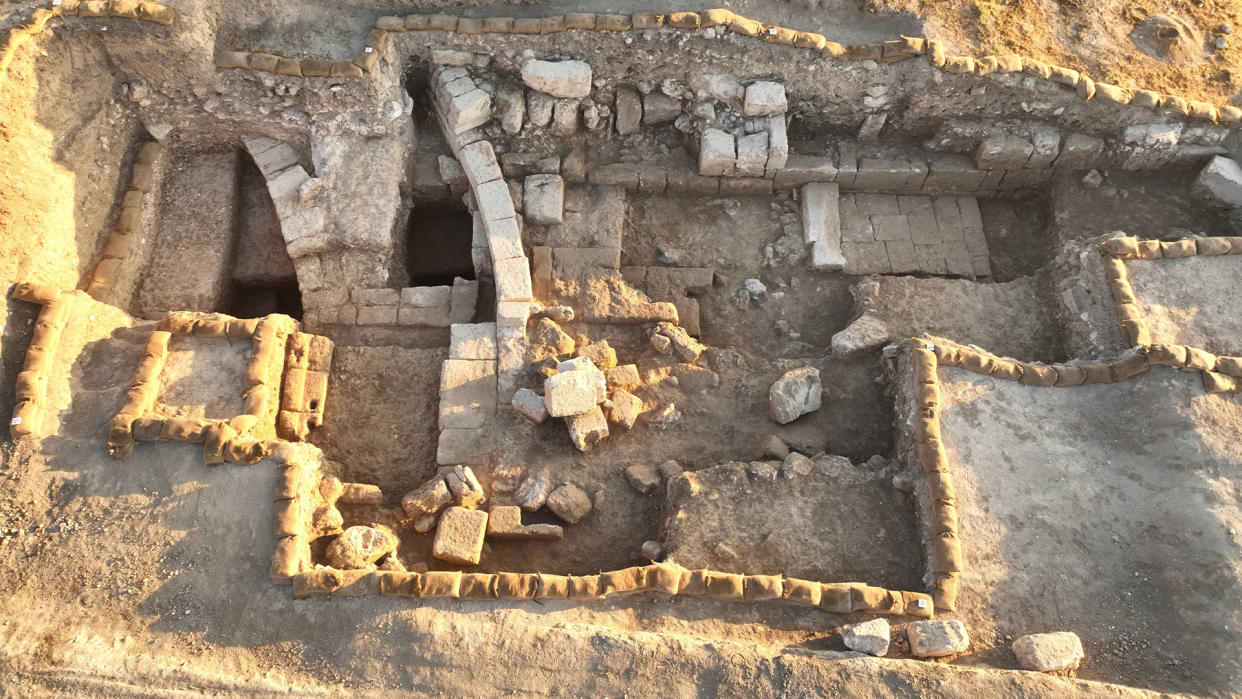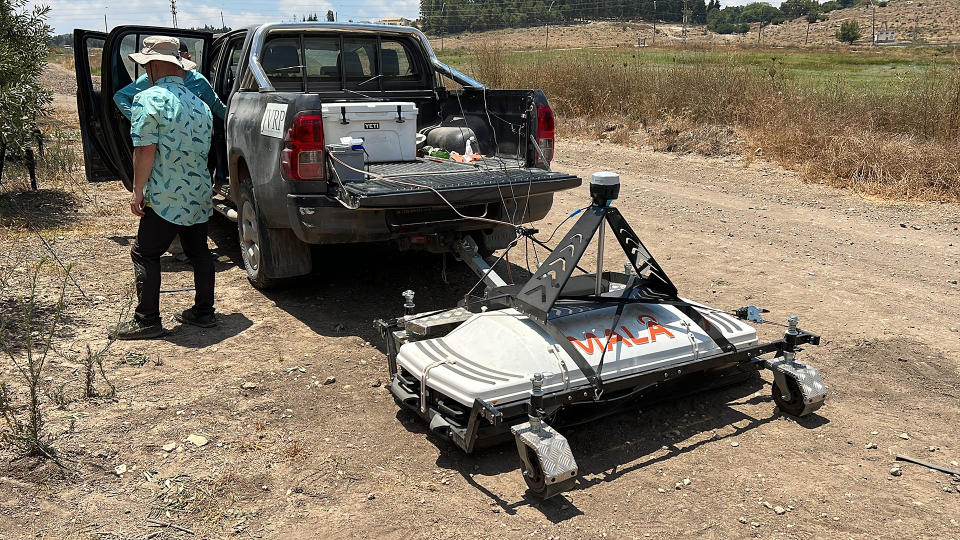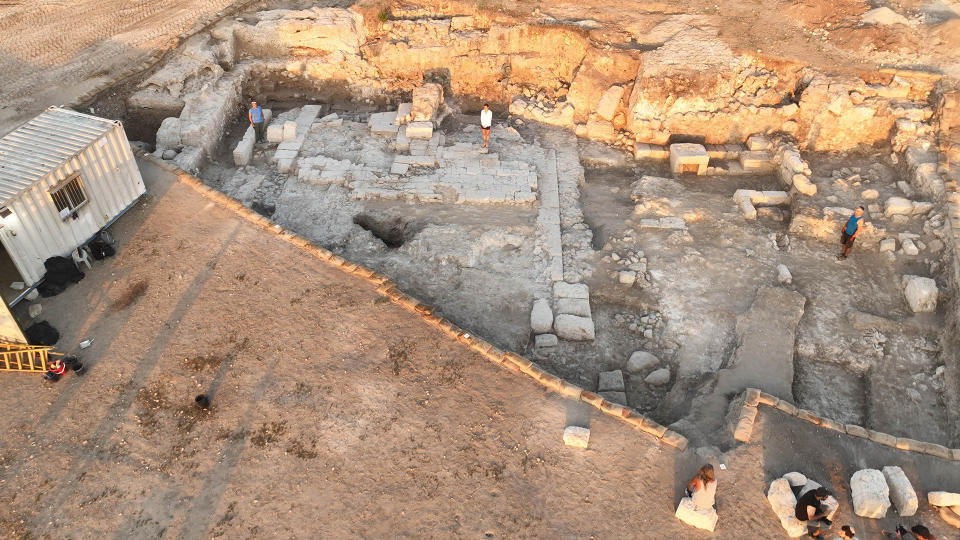Blood-red walls of Roman amphitheater unearthed near 'Armageddon' in Israel

Archaeologists in Israel have found a blood-red combat arena at Legio, a massive military base that housed Rome's "ironclad" legion in the second century.
The team found the military camp and its arena — designed not for theater entertainment but for combat training — near Megiddo, also known as Armageddon, the place where the Christian Bible foretells the battle at the end of the world will commence.
The 1,800-year-old Roman camp lies beneath the agricultural fields of Kibbutz Megiddo in Jezreel Valley. Legio was rediscovered between 1998 and 2000 through preliminary archaeological surveying. Excavations revealing the perimeter of the military base and the "principia," or headquarters, and its surrounding structures have taken place since 2010.
During excavations this summer, a team of archaeologists more thoroughly investigated the principia. This portion of the military compound includes an administrative center and religious structures. Outside the walls of the base, a cemetery and an amphitheater have been discovered, thanks in part to an innovative technology called ground-penetrating radar (GPR).
Related: Ancient Roman camps from secret military mission spotted using Google Earth
With this technique, researchers are able to noninvasively survey and study features that lie beneath the soil, including roads, courtyards and buildings, by using a machine that sends pulses of high-frequency radio waves underground. The team can then map the pulses that return, giving them a blueprint of what lies beneath the surface. During the 2023 season, the researchers — led by Eileen Ernenwein, a geoscientist at East Tennessee State University — towed a GPR system behind a vehicle. Despite the team's progress, about half of Legio remains to be charted with GPR and subsequently excavated.

The ensuing dig exposed the remnants of the structures and defined them more clearly. For instance, the amphitheater for troop combat training had the remnants of a unique decorative choice: blood-red paint adorning the stone walls.
"This kind of amphitheater — for the army, not the general public — has not been found before in the region," Matthew J. Adams, co-director of the Legio excavations and director of The Center for the Mediterranean World, a nonprofit based in Tucson, Arizona, told Live Science in an email. Two different, circular walls were exposed, indicating that the building underwent an expansion at some point.
Further, the team is "finding evidence of cultic activity within the gate [of the amphitheater], including dozens of lamps, that are, perhaps, related to the cult of Nemesis," the goddess of retribution and receiving just deserts, he said.
Overall, the military fortifications at Legio measure about 1,640 by 1,300 feet (500 by 400 meters) and housed some 5,000 soldiers from Legion II Trajana and Legion VI Ferrata. Heinz-Jürgen Beste, an engineer and Greek and Roman building researcher at the German Archaeological Institute, told Live Science in an email that the expansion of the amphitheater indicates "that there has been a great temporal continuity of a training site" that highlights the importance of a well-trained military presence in Legio. Beste was not involved in the excavations.

The principia at Legio measures nearly 330 by 200 feet (100 by 60 m), and contains not only the administrative center, but also a "sacellum" or temple. According to the Israeli newspaper Haaretz, three toes carved from ivory were discovered within the sacellum. Most likely, they belonged to a statue depicting a Roman emperor, perhaps Hadrian (ruled A.D. 117 to 138), suggesting Roman imperial cult practices — in which an emperor was deified and worshiped as a god — occurred at Legio.
RELATED STORIES
—66 Roman Army camps in northern Spain shed light on infamous conquest
—Ancient Roman 'spike defenses' made famous by Julius Caesar found in Germany
The legionary cemetery, outside the walls of the base, is also a significant area of study at Legio. Adams said the team is collecting "DNA samples that will help us to better understand the ethnic makeup of the legion. Were they primarily locals? Were they from the far reaches of the empire? This is an exciting way into understanding the makeup and recruiting practices of the army."
The excavation at the legionary base in Legio is being conducted under the management of Yotam Tepper and Adams on behalf of the Jezreel Valley Regional Project and the Albright Institute in Jerusalem, with the support of the Antiquities Authority and funding of American Archaeology Abroad.

